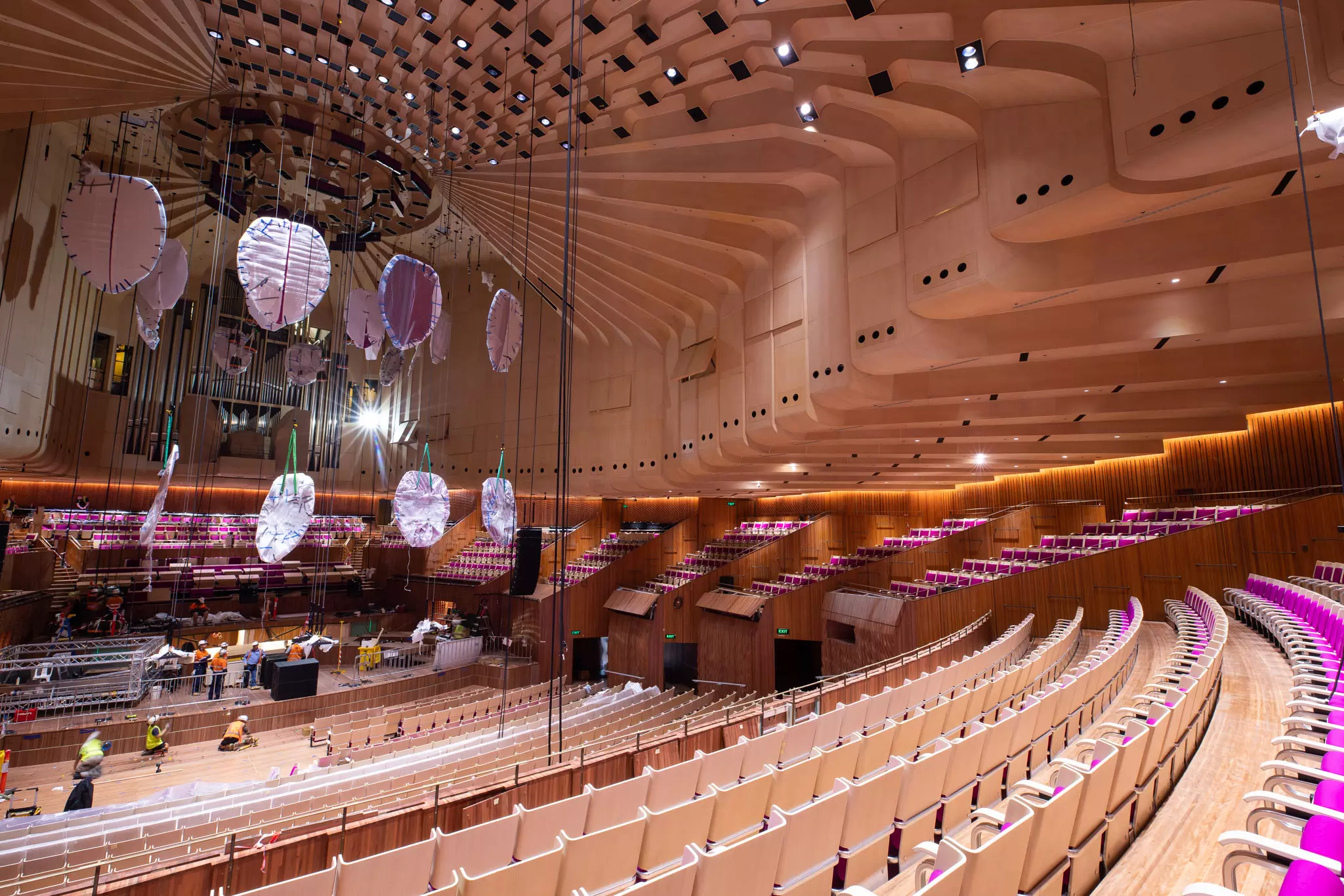
Tutorial 101 to sounds like an Australian: The Aussie Slang
May 9, 2024
Discover the Most Exciting Snow Mountains in Australia! The Best Choice for Family Trips!
May 27, 2024
The Sydney Opera House, located at Sydney Harbour in Australia, is not only one of the most famous landmarks in Australia but also one of the most recognizable buildings in the world. Its unique shell-shaped roofs and spectacular appearance attract millions of visitors each year. However, behind this magnificent structure lies many little-known stories and legends. Let’s unveil the mysteries of this landmark building together.
1. Inspiration and Design

The birth of the Sydney Opera House began in 1956 when the Australian government held an international design competition to build a world-class opera house in Sydney. This competition attracted 233 design proposals from 32 countries. Danish architect Jørn Utzon’s design eventually stood out, impressing the judges with its boldness and innovation.
Utzon’s design was inspired by natural elements such as shells, oranges, and palm leaves. He aimed to create a building with organic beauty through these natural forms. The design of the Sydney Opera House features three overlapping groups of “shells,” which not only serve as an aesthetic choice but also have excellent acoustic properties. However, this design was also considered a significant technical challenge, especially the gracefully curved roof structures.
2. Construction Challenges
:max_bytes(150000):strip_icc()/architecture-utzon-SOH-3396452-crop-5b3cfdcd46e0fb0037c1b78e.jpg)
The construction of the Sydney Opera House was full of challenges and controversies. The project officially began in 1959, initially estimated to take four years and cost 7 million Australian dollars. However, the actual situation was far more complex. The opera house was not completed until 1973, with a total cost exceeding 100 million Australian dollars.
During construction, engineers faced unprecedented technical difficulties. The initial design drawings did not detail how to construct these complex roof structures, so engineers had to develop new techniques to realize the design. Ultimately, they adopted a method of prefabricated concrete shell units, which were assembled on-site into the final roof structure.
However, technical challenges were not the only difficulties. The construction process saw constant budget overruns and delays. These issues drew widespread attention and criticism from the government, media, and public. More seriously, the friction between Utzon and the Australian government and engineering team gradually intensified. In 1966, due to political pressure and professional disagreements, Utzon was forced to resign as chief architect and left Australia. He never returned to see his completed masterpiece.
3. A Cultural and Artistic Hub

Despite the arduous construction process, the Sydney Opera House ultimately became a cultural and artistic hub. On October 20, 1973, Queen Elizabeth II presided over the opening ceremony of the Opera House. Since then, it has become one of the busiest performing arts centers in the world, hosting over 1,500 performances each year, including opera, concerts, dance, and theater.
The interior design of the Opera House is equally impressive, featuring multiple performance halls and functional areas. The largest hall, the Concert Hall, can accommodate 2,700 spectators and is renowned for its world-class acoustics. Other performance spaces, such as the Drama Theatre, Opera Theatre, and Recording Studio, are versatile and can cater to various types of performances.
In addition to performing arts, the Sydney Opera House is at the heart of cultural activities in Australia, hosting various festivals, exhibitions, and workshops each year. This building not only attracts numerous internationally renowned artists and orchestras but also provides a platform for local artists to showcase their talents.
4. A Modern Symbol
Today, the Sydney Opera House is more than just a building; it represents the creative spirit and cultural diversity of Australia. In 2007, it was listed as a World Heritage Site by UNESCO, becoming one of the few buildings to receive this honor while its architect was still alive.
Utzon’s foresight and creativity in designing the Sydney Opera House continue to inspire architects and artists worldwide. His design not only challenged the technical limits of the time but also set a new benchmark for future architectural creations.
When the Sydney Opera House was listed as a World Heritage Site, UNESCO praised it as “one of the indisputable masterpieces of human creativity,” stating that it “pushed the boundaries of architecture as a discipline and transformed the way we understand and use buildings in public spaces.”
5. Contemporary Influence
The Sydney Opera House has had a profound impact on contemporary architecture and culture. Its design and construction process demonstrated how to combine art and technology to create a space that is both beautiful and functional. Many modern architects have been inspired by the Sydney Opera House to explore new design concepts and construction techniques.
Moreover, the Sydney Opera House has become a symbol of Australian culture. During major holidays or events, the roof of the Sydney Opera House is lit up with special lights, sharing Australia’s festive moments with the world. This building has also appeared in countless movies, TV shows, and advertisements, further cementing its global recognition.

The story of the Sydney Opera House is one of innovation, perseverance, and cultural fusion. From its inspiration and the challenges of construction to its role today as a cultural symbol, this building embodies the wisdom and effort of countless individuals. When you stand in front of the Sydney Opera House and admire its magnificent architecture, remember these stories behind it—they add depth and charm to this landmark.
Whether you are an architecture enthusiast or a cultural explorer, the Sydney Opera House will offer you profound insights and aesthetic enjoyment. This building is not only a pride of Australia but also a treasure in the hearts of architecture and culture lovers worldwide. Each visit to the Sydney Opera House is like a feast of culture and art, making it a truly unforgettable experience.






